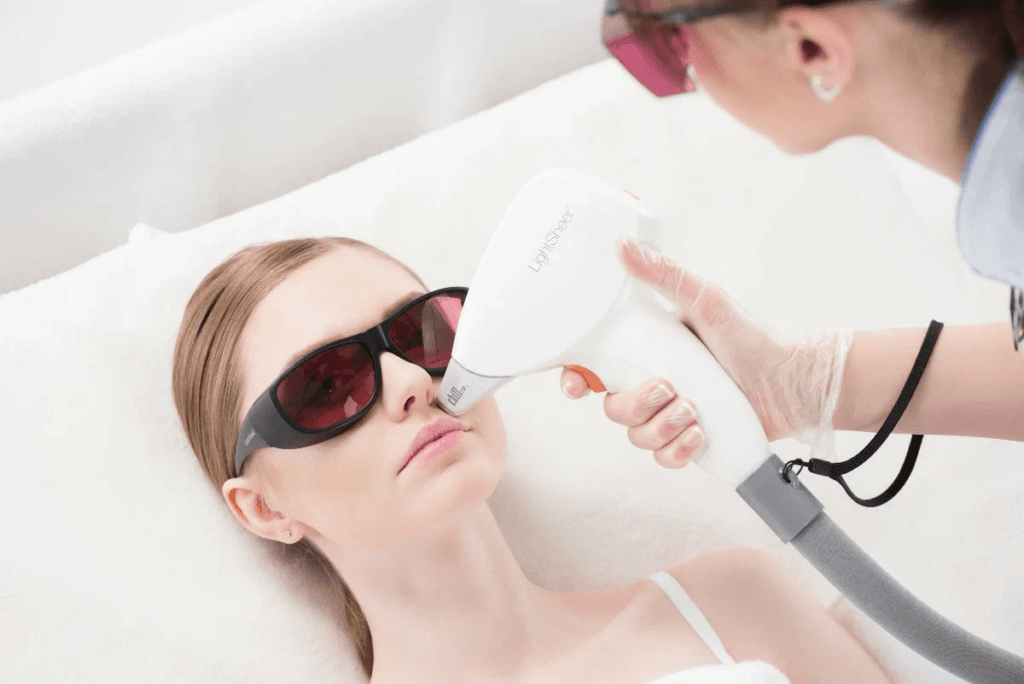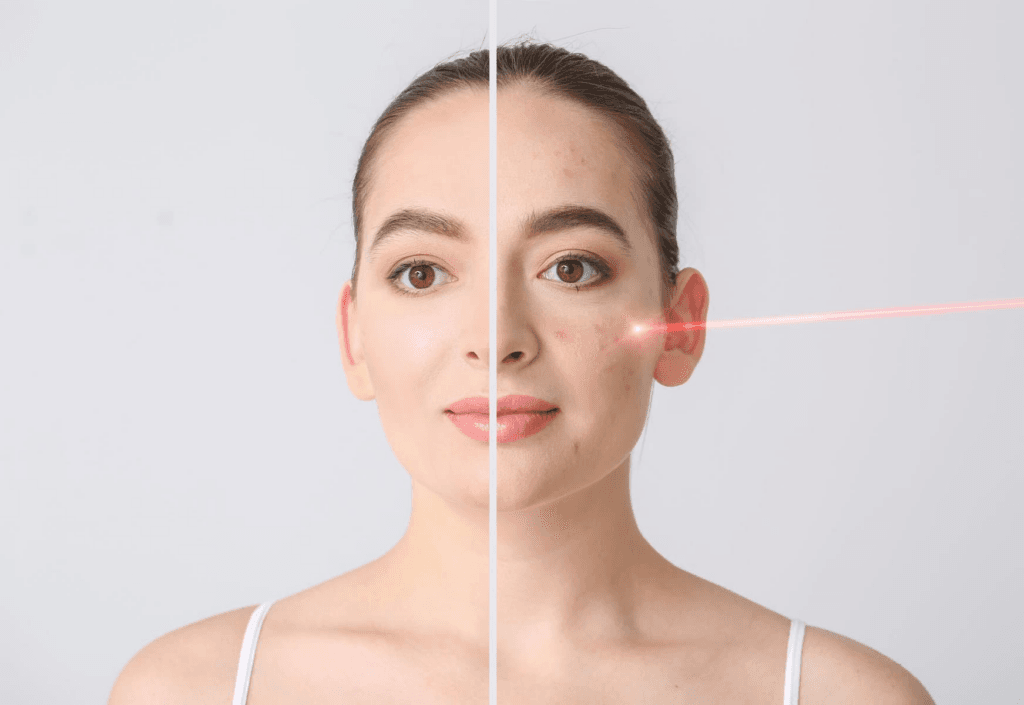Laser treatments for the face have become increasingly popular for addressing various skin concerns, from wrinkles and age spots to acne scars and rosacea. While these procedures offer significant potential benefits, it’s crucial to understand the associated risks and potential side effects. This article will explore the range of side effects, from minor and temporary to more serious complications, and provide guidance on minimizing risks and ensuring proper aftercare. Remember, this information is for general knowledge and should not replace a consultation with a qualified dermatologist. Individual results and risks vary depending on factors such as skin type, treatment type, and the skill of the practitioner.
Understanding Face Laser Side Effects
Laser treatments work by targeting specific layers of the skin with highly concentrated light energy. This process, while effective, can trigger a range of responses from the body. The severity of side effects depends on several factors, including the type of laser used (e.g., ablative vs. non-ablative), the intensity of the treatment, the patient’s skin type and overall health, and the practitioner’s experience. Some side effects are predictable and temporary, while others are rare but potentially serious. It’s vital to discuss all potential risks with your dermatologist before undergoing any laser treatment to make an informed decision. Open communication is key to managing expectations and ensuring a safe and effective procedure.
Understanding the potential side effects allows you to prepare for your recovery and to communicate effectively with your dermatologist if any unexpected issues arise. Many minor side effects are normal parts of the healing process, and your dermatologist will provide guidance on managing them. However, it is crucial to report any concerning symptoms promptly to prevent potential complications. The information provided here is for educational purposes and should not be considered a substitute for professional medical advice.
A thorough consultation with your dermatologist is essential before undergoing any laser treatment. This consultation will involve a comprehensive assessment of your skin type, medical history, and treatment goals. Your dermatologist will explain the specific risks and benefits associated with the chosen procedure, answer all your questions, and help you make an informed decision. This collaborative approach is crucial for ensuring a positive outcome and minimizing the risk of complications.

Common Minor Side Effects to Expect
Most patients experience mild, temporary side effects after a face laser treatment. These often include redness and swelling, which typically peak within the first 24-48 hours and gradually subside over several days. Some individuals may also experience mild discomfort or a burning sensation during the procedure, which is usually managed with topical anesthetic creams. Slight bruising or pinpoint bleeding is also possible, particularly with more aggressive treatments. These minor side effects are generally considered normal and are a sign that the laser is working to stimulate skin regeneration.
Dryness, tightness, and mild peeling of the skin are also common occurrences following laser treatments. These are usually temporary and can be managed with appropriate moisturizers and gentle cleansers recommended by your dermatologist. It’s important to avoid harsh scrubbing or exfoliation during the healing period to prevent irritation and potential complications. Sun sensitivity is another common side effect, so diligent sun protection with a broad-spectrum sunscreen with an SPF of 30 or higher is essential. Following your dermatologist’s post-treatment care instructions carefully will help minimize these minor side effects.
Pigmentation changes, such as temporary darkening or lightening of the skin, can occur, especially in individuals with darker skin tones. These changes are usually temporary and resolve over time. However, it’s crucial to follow your dermatologist’s instructions regarding sun protection to minimize the risk of long-term pigmentation issues. Itching is another possible minor side effect, which can be alleviated with gentle moisturizing creams or as directed by your dermatologist. These minor side effects are generally manageable and temporary, resolving within a few days or weeks.
The duration and intensity of these minor side effects vary depending on the type of laser treatment, the individual’s skin type, and the treatment’s intensity. It’s essential to communicate any concerns or unexpected symptoms to your dermatologist promptly. They can provide personalized advice and guidance to manage these side effects effectively and ensure optimal healing. Your dermatologist will also monitor your progress and address any concerns you may have throughout the recovery period.
More Serious Potential Complications
While rare, more serious complications can occur following face laser treatments. These include infection, which can manifest as redness, swelling, pus, or fever. Prompt medical attention is crucial if signs of infection develop. Scarring is another potential complication, particularly with ablative laser treatments or in individuals prone to keloid formation. The risk of scarring can be minimized by choosing an experienced dermatologist and adhering strictly to post-treatment care instructions.
Hyperpigmentation, or excessive darkening of the skin, can occur, especially in individuals with darker skin tones. This can be more persistent than temporary post-inflammatory hyperpigmentation and may require additional treatments to correct. Hypopigmentation, or lightening of the skin, is another potential complication, although less common. Both hyperpigmentation and hypopigmentation can be challenging to treat, highlighting the importance of selecting an experienced dermatologist and adhering to their post-treatment instructions.
Nerve damage is a rare but possible complication, particularly with deeper laser treatments. This can manifest as numbness, tingling, or pain in the treated area. While usually temporary, nerve damage can be persistent in some cases. Burns are another potential risk, though less likely with experienced practitioners using appropriate laser settings. Severe burns can lead to scarring and other complications.
It is imperative to choose a qualified and experienced dermatologist for laser treatments to minimize the risk of serious complications. A thorough consultation, including a discussion of potential risks and benefits, is essential. Selecting a board-certified dermatologist with extensive experience in laser treatments significantly reduces the likelihood of adverse events. Always follow your dermatologist’s instructions carefully, both during and after the procedure, to ensure optimal healing and minimize the risk of complications.
Minimizing Risks and Aftercare
Choosing a board-certified dermatologist with extensive experience in laser treatments is the first and most crucial step in minimizing risks. Look for a dermatologist who uses advanced laser technology and has a proven track record of successful treatments. During your consultation, don’t hesitate to ask detailed questions about their experience, the specific laser technology they use, and their approach to managing potential side effects. Thorough communication is key to a safe and effective procedure.
Before undergoing any laser treatment, discuss your medical history, including any medications you are currently taking, with your dermatologist. Certain medications can increase the risk of complications or interfere with the healing process. Your dermatologist will assess your suitability for the treatment and advise you on any necessary precautions. Following your dermatologist’s pre-treatment instructions carefully, such as avoiding sun exposure and certain medications, is equally important in minimizing risks.
After the procedure, adhering strictly to your dermatologist’s post-treatment care instructions is paramount. This typically includes using prescribed creams or ointments, avoiding sun exposure, and keeping the treated area clean and moisturized. Regular follow-up appointments with your dermatologist are crucial for monitoring your progress and addressing any concerns. These appointments allow for early detection and management of any potential complications.
Proper aftercare is crucial for minimizing the risk of complications and optimizing healing. This includes diligent sun protection with a broad-spectrum sunscreen with an SPF of 30 or higher, gentle cleansing, and moisturizing. Avoid harsh scrubs, exfoliants, and makeup during the healing period. Promptly report any unusual symptoms, such as excessive redness, swelling, pain, or signs of infection, to your dermatologist. By following these guidelines, you can significantly reduce the risk of complications and promote optimal healing after your face laser treatment.
Face laser treatments offer significant potential benefits for improving skin appearance, but it’s vital to be aware of the associated risks and side effects. By choosing a qualified dermatologist, undergoing a thorough consultation, and following pre- and post-treatment instructions carefully, you can minimize risks and maximize the chances of a safe and successful outcome. Remember that open communication with your dermatologist is key throughout the entire process. This collaborative approach will ensure you receive the best possible care and achieve your desired results while minimizing potential complications.
Discover the expertise of Dr. Ebru Okyay, your trusted dermatologist in Antalya. Whether you’re looking to address medical skin concerns or enhance your natural beauty with cosmetic treatments, Dr. Okyay is here to help. With personalized care and advanced techniques, achieving your skin goals has never been easier.
